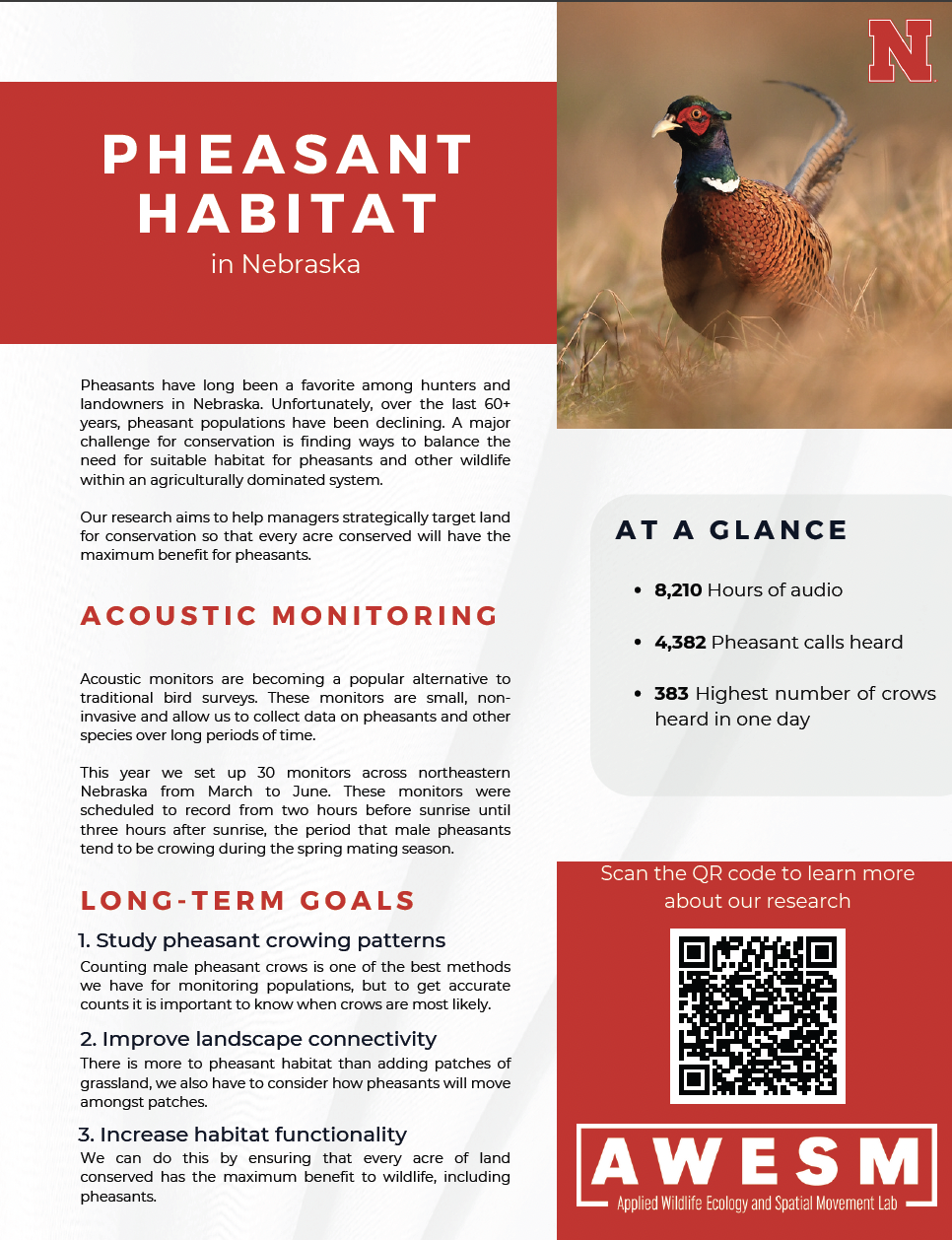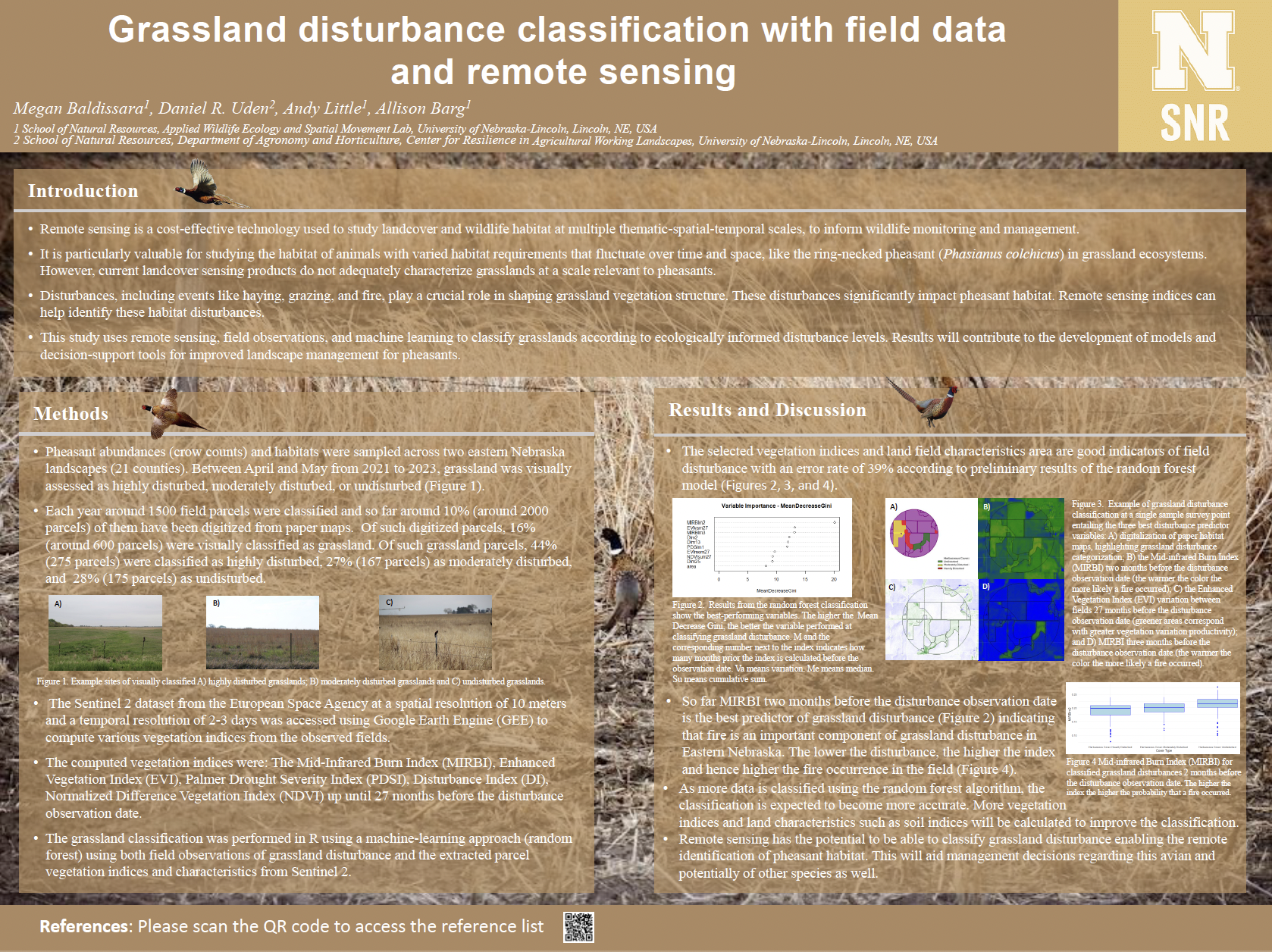Identifying and Prioritizing Pheasant Habitat in Agricultural Landscapes
Graduate Students
Research Technicians
- Ryan Lamont (2021)
- Nate Rykerd (2023)
- Terah Hansen (2024)
Collaborators
Funding Source(s)
Over the last 50 years we have seen declines in populations of ring-necked pheasants (Phasianus colchicus) throughout the Midwest, largely driven by the intensification of agricultural practices leading to habitat loss. In response, state wildlife agencies have focused on enrolling private lands in conservation programs that work with producers to convert agricultural fields into suitable wildlife habitat.
While these programs have helped to increase populations of other gamebird species, pheasants have continued to decline in Nebraska. It is thought that the reason behind this could have less to do with the amount of habitat present and more to do with where the habitat is located.
Currently, lands enrolled in conservation programs often create patches of habitat that are suitable for pheasants and other wildlife, but they are scattered across the landscape and disconnected from one another. This is partially due to limited financial resources, but is also because state agencies lack techniques to prioritize land for maximum benefits to wildlife. This research aims to provide land and wildlife managers with the tools to target habitat conservation efforts for maximum benefits to pheasant populations. To do this, we aim to:
- Determine the density and arrangement of suitable habitat needed to support pheasant populations.
- Evaluate how pheasants respond regionally to increases or decreases in suitable habitat.
- Forecast future population densities under various configurations of suitable habitat using a structured-decision making (SDM) framework and forecast modeling.
Determining suitable habitat arrangements for pheasants — Alli
It is generally well-known what sorts of vegetation are needed for pheasant habitat, but we don't know how the arrangement and density of that habitat might affect pheasant populations. Additionally, habitat is likely to shift and change with time as land use changes and disturbances occur. It's imperative for healthy pheasant populations that we understand how pheasants respond to these changes in suitable habitat.
Forecast modeling with remote sensing — Megan
Landscapes can change quickly from disturbances such as fire or haying, which can impact success for pheasants. Unfortunately, biologists often aren’t able to see real-time data on disturbance levels when identifying areas for habitat management. By training remote sensing technology to recognize when grassland has been disturbed or not, we can create a flexible model that will help biologists create a more targeted and accurate approach to pheasant conservation and management.

